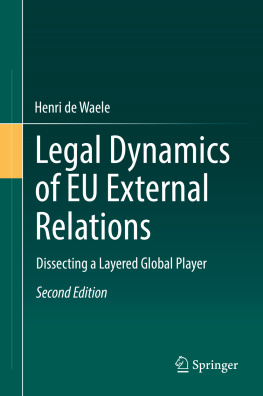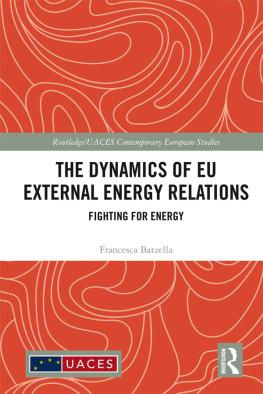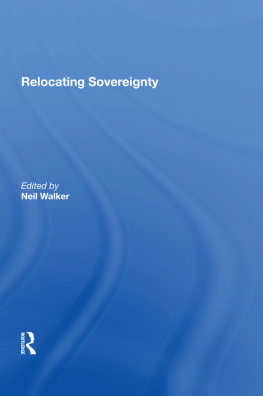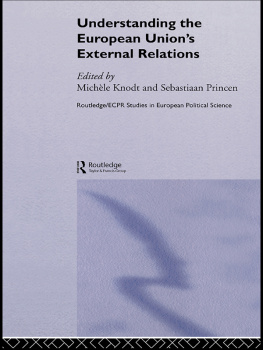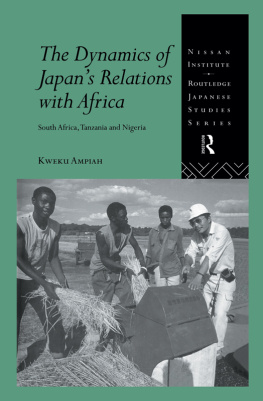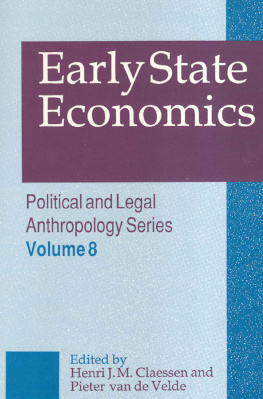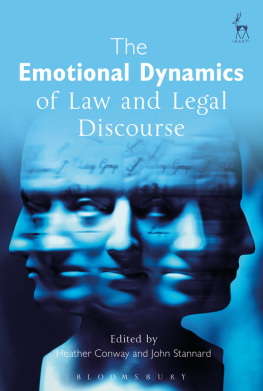1.1 Introduction
In this chapter, we will familiarise ourselves with the layered structure of the European Union, its presence and activities on the global scene and the legal underpinnings thereof. In the following sections, we will be discussing, in subsequent order, the differing characteristics of the various layers (Sect. ). Once we have become acquainted with these general features, the ground is sufficiently prepared for an in-depth study of the Unions outer, middle and inner layers that contain its different external policies, and are explored further in parts I, II and III of this book.
1.2 The EU as a Layered Global Player
Although the EU is still regularly qualified as an international organisation and although its legal order, up to the present day, continues to be based on international treaties, it contains a number of elements that are commonly found in national federal systems. In a number of policy areas, for example, the Union enjoys exclusive competences, entailing that the Member States have no part of their own to play on the international plane. Since the entry into force of the Lisbon Treaty, there exists a Kompetenzkatalog (albeit in weak form), modelled after the one present in the German constitution, specifying the areas where the EU countries have relinquished, retained or decided to partly transfer their powers. Nevertheless, compared to other international organisations as well as national states (federal or otherwise), the Union remains a rather unique creaturean unprecedented experiment in transnational cooperation that has hitherto proven to be remarkably successful.
The unique character of the EU resides mostly in its layered structure, whereby external relations are conducted on the basis of different sets of rules. Consequently, external policies may be enacted and furthered in different ways and to differing extents, dependent on the specific powers that have been attributed in the layer concerned.
In Title V of the Treaty on European Union, one finds the main foundations for EU external action. Chap. the Common Foreign and Security Policy. All other external policies have been tucked away in the Treaty on the Functioning of the EU.
The outer layer or skin of the European Union consists of the Common Foreign and Security Policy. The CFSP has a relatively young pedigree, only officially becoming part of EU law with the Treaty of Maastricht in 1993. Nevertheless, it forms a general framework that in theory encompasses all foreign policy issues, and potentially governs all the Unions activities on the global scene. The CFSP represents the EUs front office, as in everyday reality, it is the most visible way in which the Union manifests itself to its international partners. Nevertheless, in legal terms, the CFSP has not proven to be an all-encompassing policy: rather than outstripping or replacing the other external fields of competence at the European level, it occupies a special, separate domain that has less prominence than one might think.
The middle layers are composed of those areas of external competences that previously formed part of European Community law, and are now contained in the Treaty on the Functioning of the EU. From the inception of the European Communities, the most prominent of these competences has been the one pertaining to the Common Commercial Policy (CCP). Over time, other external policies have taken shape and gradually acquired their own legal basis in the EC Treaty. In this book, three of these policies are singled out for more detailed discussion: the rules pertaining to the environment, to human rights and to development cooperation. As we will observe, in contrast to the outer layer, there is no trace of intergovernmental law- and policy-making here; entrenched in the TFEU, we find the supranational approach or classic Community method, with an ever-stronger role for the Commission and the Parliament , and an array of possibilities for the European Court of Justice to exercise judicial control.
In the inner layer, we encounter the EU Member States themselves, without which the EU institutions would not be able to function. The Member States, in their own individual capacities, continue to lie at the core of the Union. Yet they have voluntarily consented to become ever more enveloped by European law, to the detriment of their once fully autonomous and sovereign position. They nevertheless do retain a number of external competences, and at least in those fields, they do remain active and visible on the international scene. Moreover, despite the grand ambitions of the CFSP, the Member States remain at liberty to conduct an own foreign policy that reflects their own national interests, within certain limits. Additionally, political and diplomatic relations with non-EU countries are still to a considerable extent maintained by the Member States themselves, albeit that they do operate as collective within EU structures where the Treaties so dictate (for example, in the enlargement process, whenever official steps are to be taken with regard to (potential) acceding countries). In the third part of this book, we will zoom in on this hard core of the layered global player, evaluate when and how Member States can occasionally still escape and deviate from European rules, examine where the EU has drawn the red lines, and explore the ways in which rules of public international law continue to play a role here.
1.3 The Unions Legal Personality
The EU has no physical existence but is an intangible creature, a juridical construction like many others. In civil law, already in classical antiquity, the concept of a legal person was invented so as to enable traders to engage in commercial transactions in a non-private capacity. The persistence of this concept has been remarkable: at the present day and time, budding lawyers across the world have to familiarise themselves with this abstraction at some point during their studies.
Generally, (the possession of) legal personality denotes the capacity to enter into legal relations, and to be recognised as being capable to enter into legal relations, despite the fact that one is not a natural person. A company may, for example, conclude contracts, bring claims and be held accountable in courts of law. Due to its legal personality, other natural and legal persons will regard it as an equal and competent actor that they can do business with. The judiciary will take the same view and regard the entity as a valid vehicle that is competent to act, can be held accountable for its actions and is to be distinguished from the (natural) persons who are sitting on its board or are active in its employment.
As originally confirmed by Article 210 of the EEC Treaty, the European Economic Community possessed such legal personality, which entailed that it had the capacity to enter into legal relations and was recognised as being capable to do so. In its judgment, the Court ruled that Article 281 TEEC had to be taken to mean that the Community enjoyed the capacity to establish contractual links with third countries over the whole field of objectives included in Part one of the EEC Treaty. This brought an end to academic speculation and settled the matter for the next 20 years.
Box 1.1The ERTA Case
In the Spring of 1970, the Member States of the EEC, meeting in the margins of a Council of Ministers session, prepared to conclude the European Road Transport Agreement. Subsequently, however, the Commission proceeded before the European Court of Justice, contending that not the Member States but rather the Community itself ought to seal this deal. The ECJ assumed a valiant position, which in retrospect may be regarded as giving birth to the field of EU external relations law. One key section of this hallmark ruling pertained to the capability of the EEC to conduct itself as an actor at the international level to begin withan issue the Court was not inclined to spill too much ink on. Hence, it deigned to give an affirmative answer, yet in almost obiter dictum fashion.

